
How to Use NEO-6M GPS : Examples, Pinouts, and Specs
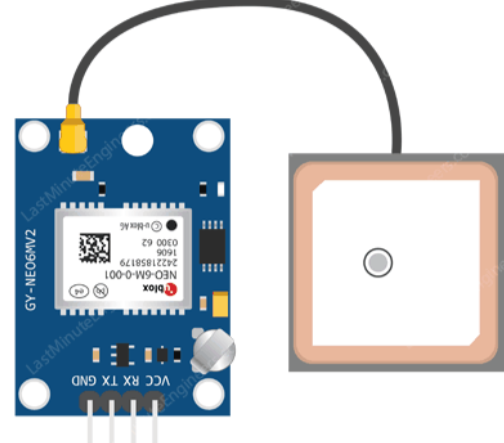
 Design with NEO-6M GPS in Cirkit Designer
Design with NEO-6M GPS in Cirkit DesignerIntroduction
The NEO-6M GPS, manufactured by u-blox, is a compact and high-performance GPS receiver module designed for accurate positioning and navigation. With its high sensitivity, low power consumption, and ease of integration, the NEO-6M GPS is a popular choice for applications such as robotics, drones, vehicle tracking, and personal navigation systems. The module is equipped with a built-in ceramic antenna, onboard EEPROM, and a backup battery for faster cold starts, making it a versatile and reliable solution for GPS-based projects.
Explore Projects Built with NEO-6M GPS
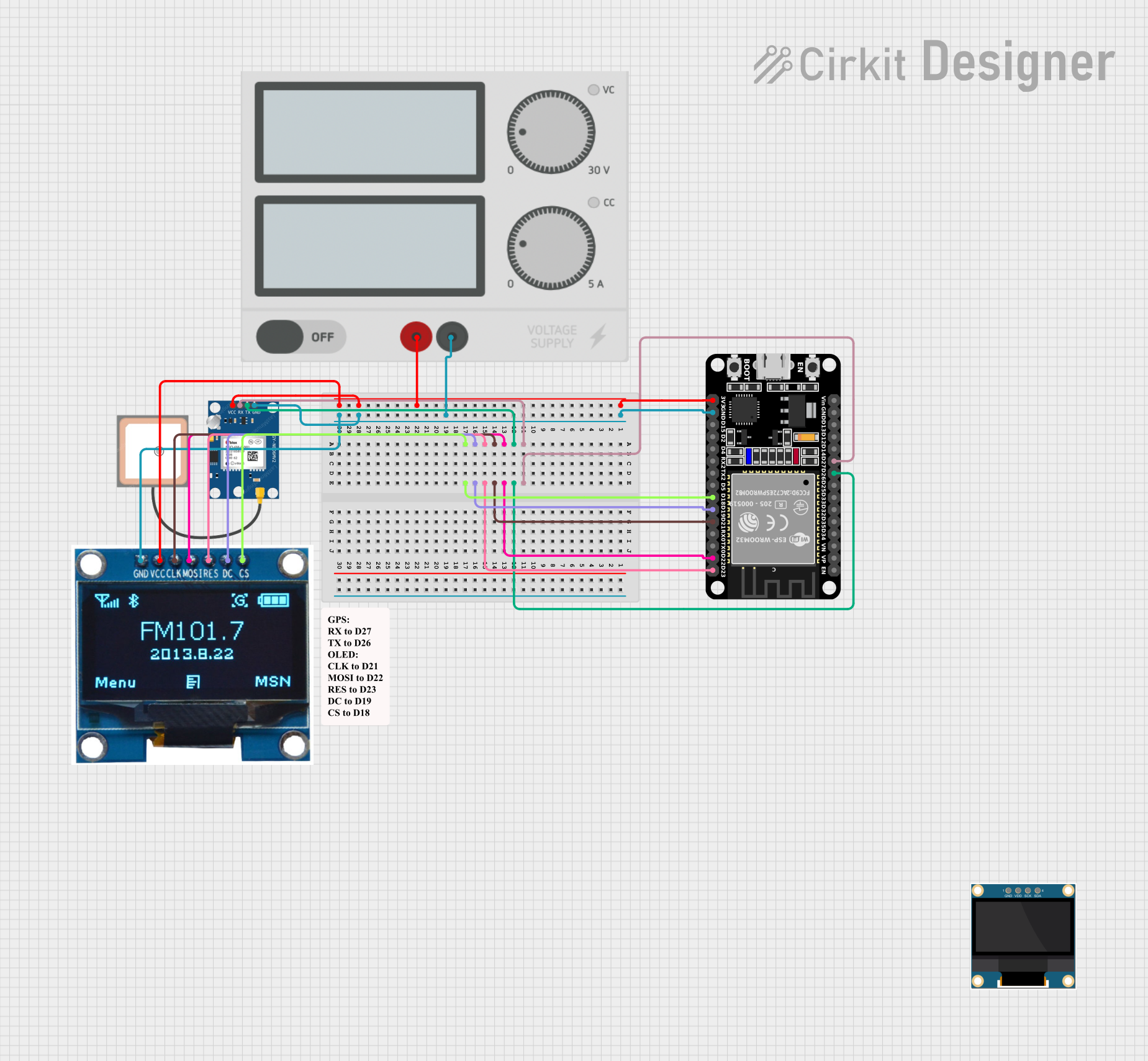
 Open Project in Cirkit Designer
Open Project in Cirkit Designer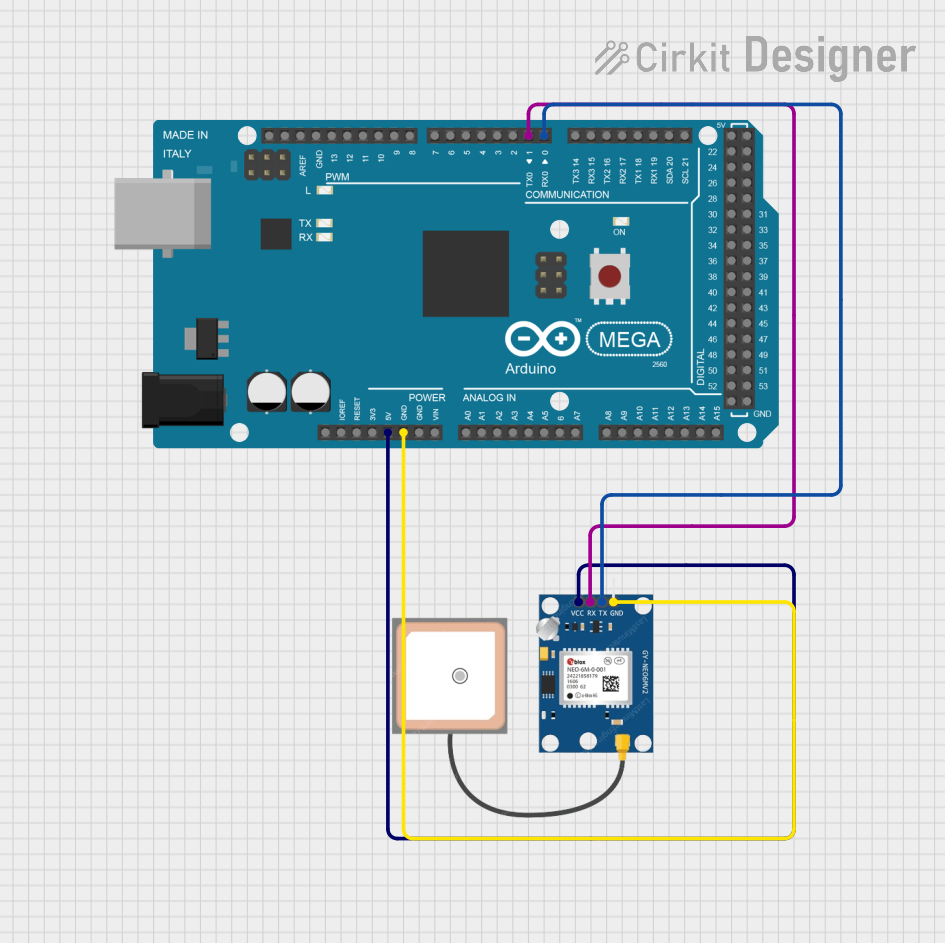
 Open Project in Cirkit Designer
Open Project in Cirkit Designer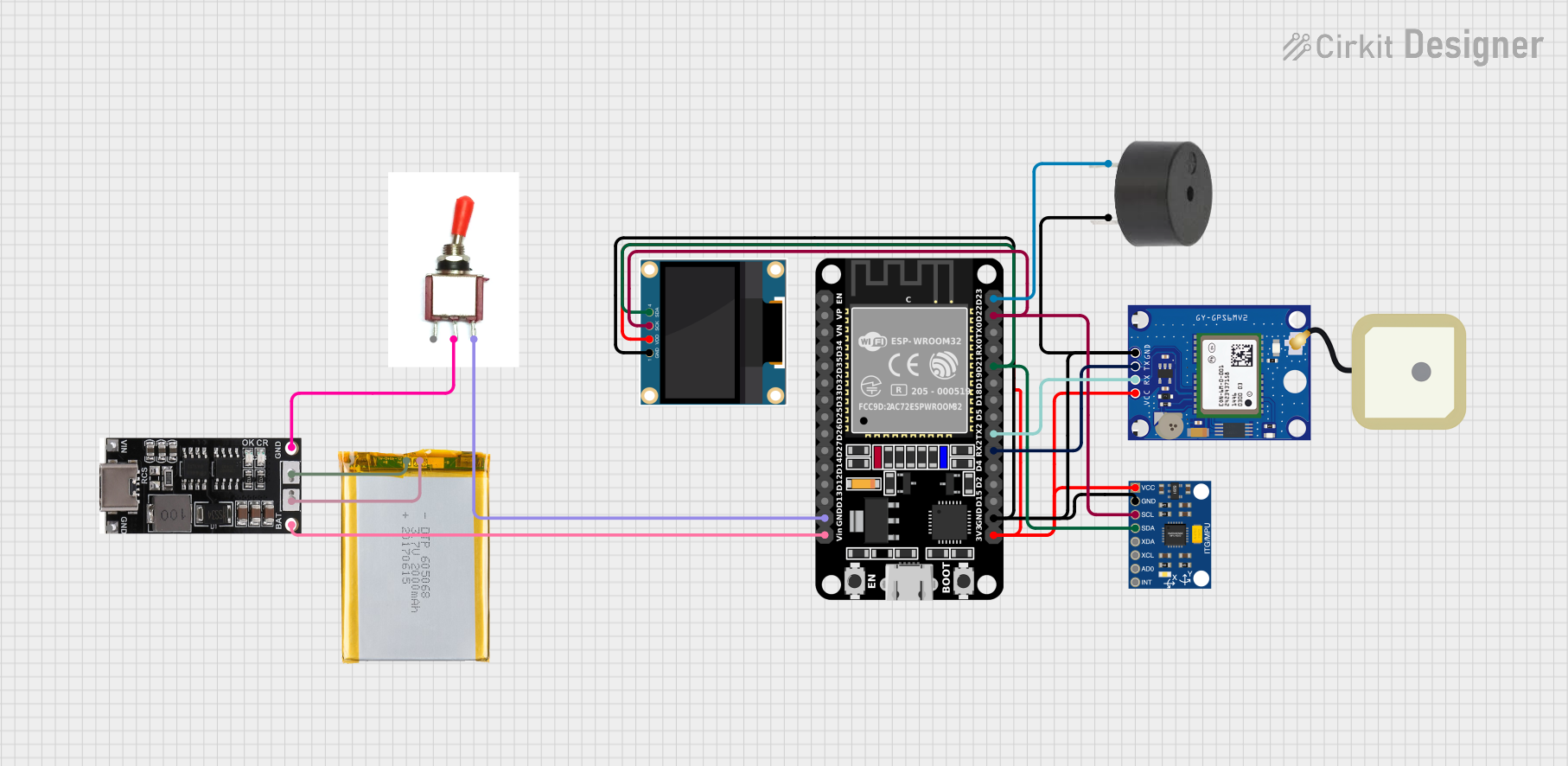
 Open Project in Cirkit Designer
Open Project in Cirkit Designer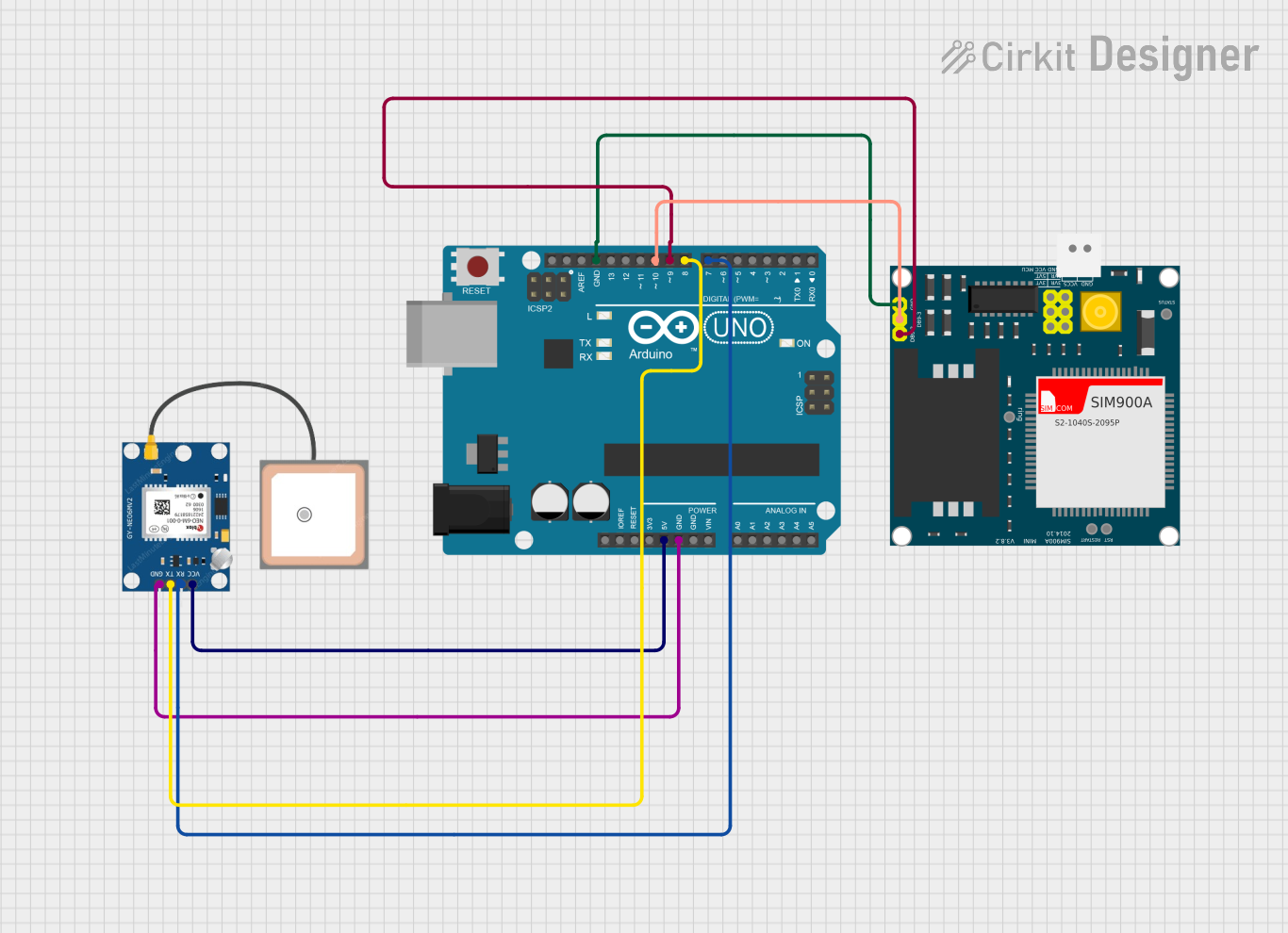
 Open Project in Cirkit Designer
Open Project in Cirkit DesignerExplore Projects Built with NEO-6M GPS

 Open Project in Cirkit Designer
Open Project in Cirkit Designer
 Open Project in Cirkit Designer
Open Project in Cirkit Designer
 Open Project in Cirkit Designer
Open Project in Cirkit Designer
 Open Project in Cirkit Designer
Open Project in Cirkit DesignerTechnical Specifications
Below are the key technical details and pin configuration for the NEO-6M GPS module (GY-GPS6MV2):
Key Technical Details
| Parameter | Specification |
|---|---|
| Manufacturer | u-blox |
| Part ID | GY-GPS6MV2 |
| GPS Receiver Type | NEO-6M |
| Operating Voltage | 3.3V to 5V |
| Power Consumption | ~45mA (typical) |
| Positioning Accuracy | 2.5m CEP (Circular Error Probable) |
| Cold Start Time | < 27 seconds |
| Warm Start Time | < 1 second |
| Communication Interface | UART (default baud rate: 9600 bps) |
| Antenna | Built-in ceramic antenna |
| Backup Battery | CR1220 (for faster satellite acquisition) |
| Dimensions | 25mm x 35mm |
Pin Configuration and Descriptions
| Pin Name | Pin Number | Description |
|---|---|---|
| VCC | 1 | Power supply input (3.3V to 5V) |
| GND | 2 | Ground connection |
| TXD | 3 | UART Transmit pin (data output) |
| RXD | 4 | UART Receive pin (data input) |
| PPS | 5 | Pulse Per Second output (optional) |
Usage Instructions
How to Use the NEO-6M GPS in a Circuit
- Power Supply: Connect the VCC pin to a 3.3V or 5V power source and the GND pin to the ground of your circuit.
- UART Communication: Connect the TXD pin of the GPS module to the RX pin of your microcontroller (e.g., Arduino UNO) and the RXD pin of the GPS module to the TX pin of the microcontroller.
- Antenna Placement: Ensure the built-in ceramic antenna has a clear view of the sky for optimal satellite signal reception.
- Backup Battery: Optionally, connect a CR1220 battery to the module to enable faster satellite acquisition after power loss.
Important Considerations and Best Practices
- Signal Reception: For best results, use the module outdoors or near a window to ensure a clear line of sight to GPS satellites.
- Baud Rate: The default UART baud rate is 9600 bps. Ensure your microcontroller is configured to communicate at this baud rate.
- Power Supply: Use a stable power source to avoid interruptions in GPS data transmission.
- Data Parsing: The module outputs NMEA sentences (e.g., GPGGA, GPRMC) via UART. Use a GPS library to parse this data easily.
Example Code for Arduino UNO
Below is an example of how to interface the NEO-6M GPS module with an Arduino UNO:
#include <SoftwareSerial.h>
// Define RX and TX pins for SoftwareSerial
SoftwareSerial gpsSerial(4, 3); // RX = Pin 4, TX = Pin 3
void setup() {
Serial.begin(9600); // Initialize Serial Monitor at 9600 bps
gpsSerial.begin(9600); // Initialize GPS module at 9600 bps
Serial.println("NEO-6M GPS Module Test");
}
void loop() {
// Check if data is available from the GPS module
while (gpsSerial.available()) {
char gpsData = gpsSerial.read(); // Read one character from GPS
Serial.print(gpsData); // Print the character to Serial Monitor
}
}
Note: This code reads raw NMEA sentences from the GPS module and displays them on the Serial Monitor. Use a GPS library like TinyGPS++ for advanced parsing and data extraction.
Troubleshooting and FAQs
Common Issues and Solutions
No GPS Data Output:
- Ensure the module is powered correctly (3.3V to 5V).
- Verify the TXD and RXD connections between the GPS module and the microcontroller.
- Check that the baud rate of the GPS module matches the microcontroller's UART settings (default: 9600 bps).
Poor Signal Reception:
- Place the module in an open area with a clear view of the sky.
- Avoid using the module indoors or near large metal objects that can block satellite signals.
Slow Satellite Acquisition:
- Ensure the backup battery (CR1220) is installed for faster cold starts.
- Wait for the module to acquire satellite signals, which may take longer during the first use.
Garbage Data on Serial Monitor:
- Verify that the Serial Monitor baud rate matches the baud rate of the GPS module (9600 bps).
- Check for loose or incorrect wiring connections.
FAQs
Q1: Can the NEO-6M GPS module work indoors?
A1: While the module may work indoors, signal reception is significantly reduced. For best results, use the module outdoors or near a window.
Q2: How many satellites does the NEO-6M GPS module need for accurate positioning?
A2: The module requires a minimum of 4 satellites for a 3D fix (latitude, longitude, and altitude).
Q3: Can I change the default baud rate of the GPS module?
A3: Yes, the baud rate can be changed using u-blox's u-center software or by sending specific configuration commands to the module.
Q4: What is the purpose of the PPS pin?
A4: The PPS (Pulse Per Second) pin provides a precise timing signal that can be used for time synchronization in advanced applications.